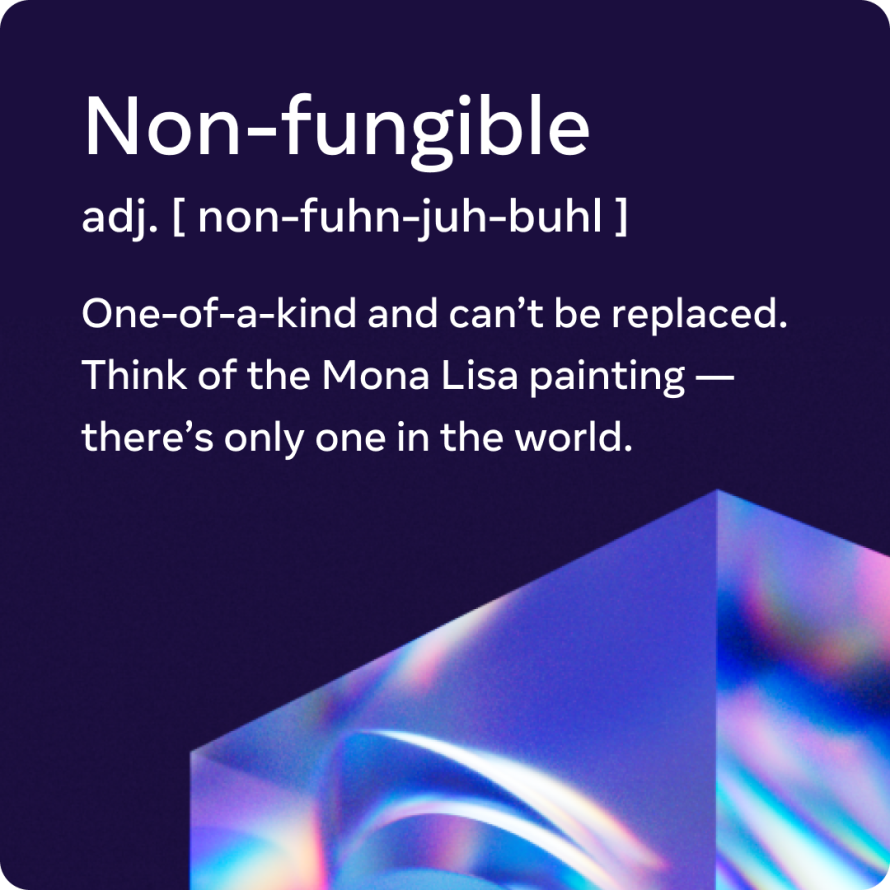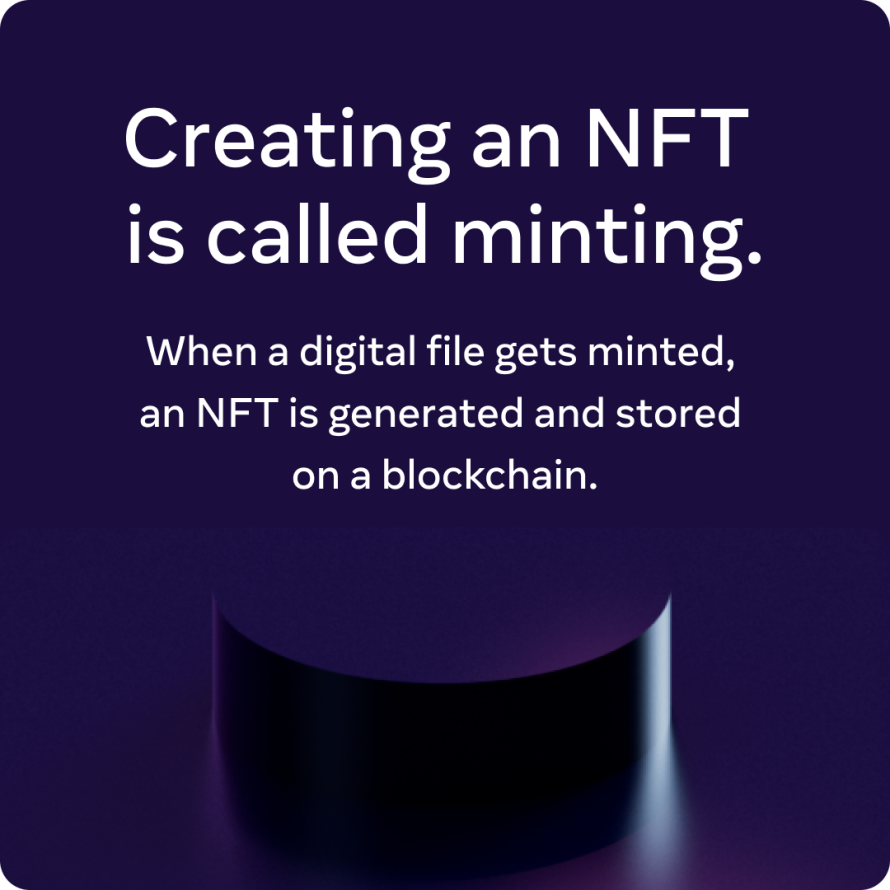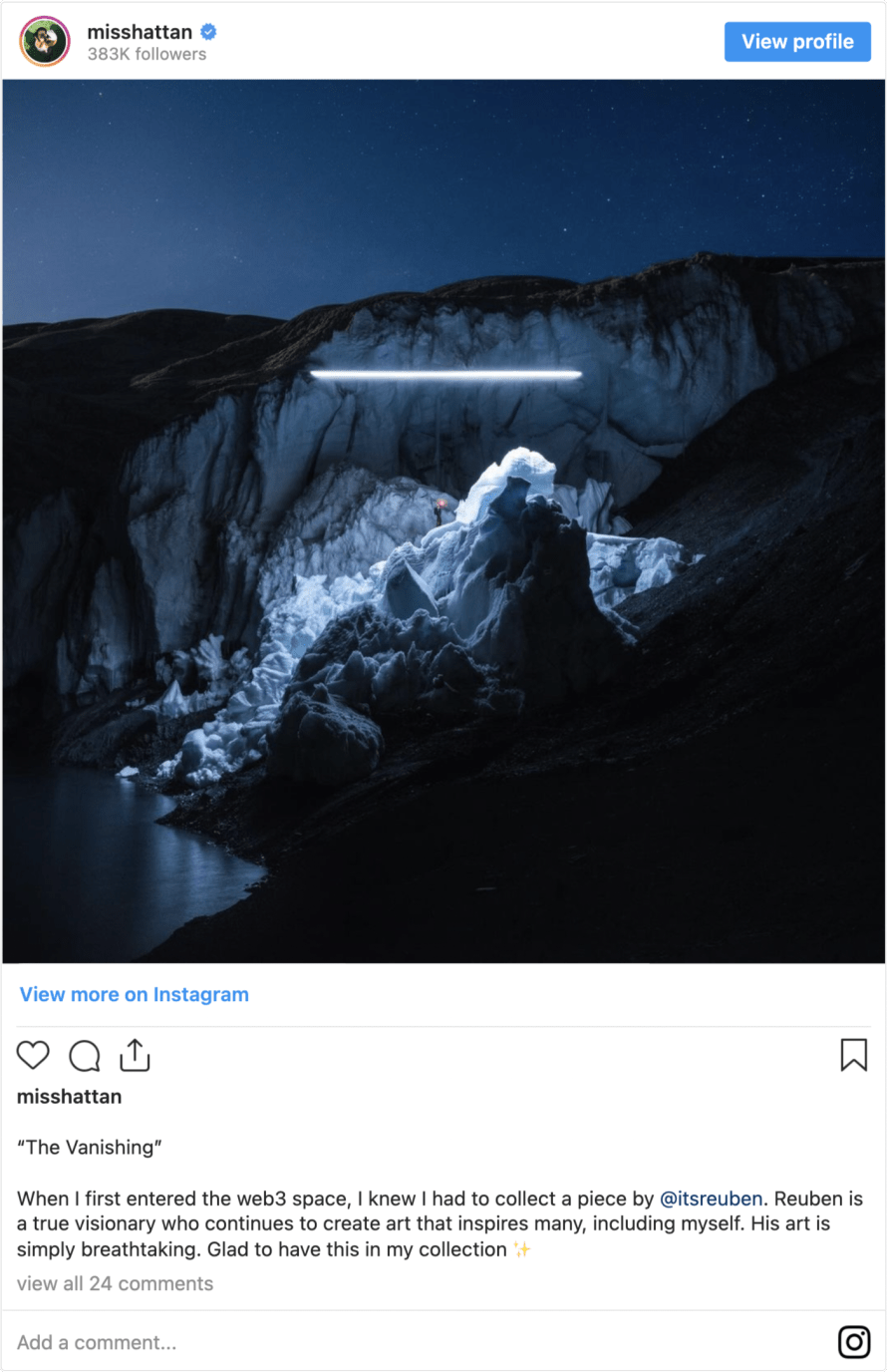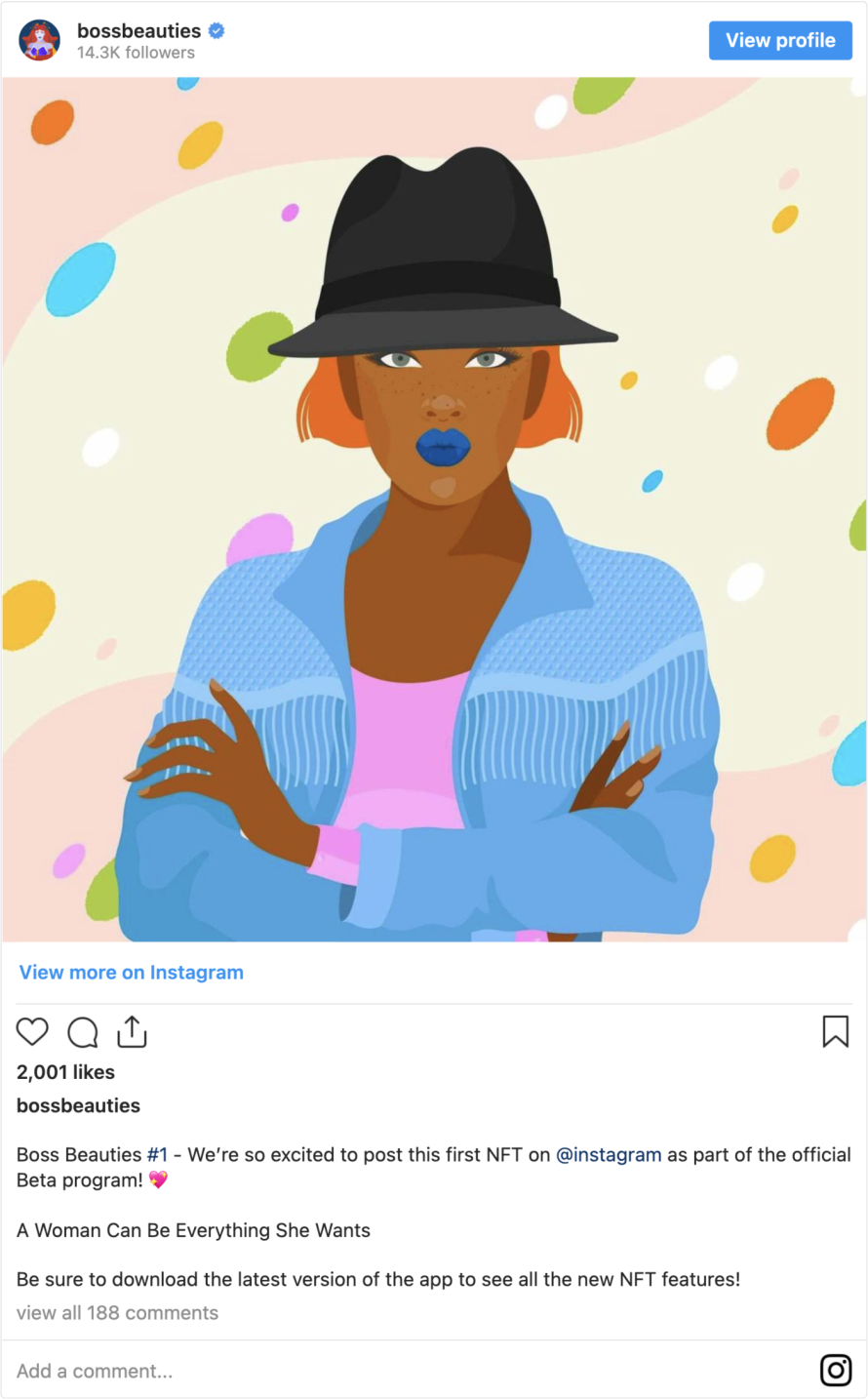Update on March 31, 2023 at 10:00AM PT:
We’re no longer offering digital collectibles on Instagram and Facebook. Any collectibles you’ve already shared will remain as posts, but no blockchain info will be displayed. For more information, visit the Help Center.
Update on November 2, 2022 at 3:00PM PT:
Creators will soon be able to make their own digital collectibles on Instagram and sell them to fans, both on and off Instagram. They’ll have an end-to-end toolkit — from creation (starting on the Polygon blockchain) and showcasing, to selling. People can easily support their favorite creators by buying their digital collectibles directly within Instagram. We’re testing these new features with a small group of creators in the US first, and hope to expand to more countries soon.
We’re also expanding the types of digital collectibles that you can showcase on Instagram to include video and adding support for the Solana blockchain and Phantom wallet, in addition to the blockchains and wallets that we already support. Lastly, information for select collections where the metadata has been enriched by OpenSea, such as collection name and descriptions, will now be available on Instagram.
Update on September 29, 2022 at 7:00AM PT:
Today we’re announcing everyone on Facebook and Instagram in the US can now connect their wallets and share their digital collectibles. This includes the ability for people to cross-post digital collectibles that they own across both Facebook and Instagram. Additionally, everyone in the 100 countries where digital collectibles are available on Instagram can now access the feature.
Update on August 29, 2022 at 9:00AM PT:
Earlier this month we expanded digital collectibles on Instagram to 100 countries in Africa, Asia-Pacific, the Middle East and the Americas. And now we’re giving people in the US the ability to share digital collectibles across both Facebook and Instagram.
Originally published on June 22, 2022 at 9:00AM PT:
Creators today are using non-fungible tokens (NFTs) to take more control over their work, their relationship with their communities and how they can monetize. And in the future, we think NFTs will be critical for how people will buy, use and share virtual objects and experiences. We recently announced a way for people to showcase NFTs with digital collectibles, just one of the new technologies we’re exploring as we build for the metaverse.
“NFT” can sometimes sound like a buzzword and you might be confused about how it works. So here are the basics:
What are NFTs?
NFT stands for non-fungible token. “Non-fungible” means something is one-of-a-kind and can’t be replaced. Think of the Mona Lisa painting — there’s only one in the world. NFTs are digital assets that represent things like art, virtual avatars, GIFs, videos, trading cards and even memes.
So if NFTs are digital, what’s stopping me from taking screenshots or downloading them?
Sure, you can take a screenshot of an NFT image, the same way you can take a photo of the original Mona Lisa. However, you’re still not the original owner of the NFT or the Mona Lisa.
Each NFT has a unique signature that verifies authenticity and any transactions related to it — who created it, who owns it, who sold it and for how much, etc. Creating an NFT is called minting. When a digital file gets minted, an NFT is generated and stored on a blockchain.
Blockchain technology provides a record of ownership on a public, distributed database that anyone can see. This record of ownership also allows for the original creator to always be credited and paid royalties, no matter how many times an NFT is sold or who owns it. The history of ownership, from creator to current owner, is called provenance, and it’s a concept already in use in the art world.
How do I buy an NFT?
Most commonly, NFT transactions are made using cryptocurrency, but some sites allow you to use credit or debit cards. To buy NFTs with cryptocurrency, you need to set up a digital wallet. There are a range of digital wallets available depending on where you live and what blockchain(s) you want to use. For example, we’re testing the ability for select creators and collectors on Instagram to showcase NFTs from compatible third-party wallets such as Rainbow, MetaMask and Trust Wallet, with Coinbase Wallet, Dapper and Phantom coming soon. Then, you need to connect your digital wallet to a third-party NFT marketplace, where you can browse and shop for NFTs.
How do I make an NFT?
- Choose a unique digital asset (art, music, meme, etc.) you want to sell.
- Decide what blockchain technology you want to use.
- Set up your digital wallet.
- Select an NFT marketplace.
- Upload your file to the marketplace to mint your NFT.
- Once you have your NFT, you can choose to keep it, sell it with a fixed price or by starting an auction, or give it away to your most loyal fans – just like a physical asset, there are lots of opportunities to put your NFT to use.
Why are some NFTs more valuable than others?
Just like pieces of art in the physical world, NFTs can be rare and valuable. Generally, when an NFT is sold on a marketplace, there’s a bidding process where the price of the NFT is determined by how much demand there is for it.
Why are so many people talking about NFTs?
NFTs are an important aspect of the economic and community-building potential of the metaverse. We believe NFTs have the opportunity to be an essential part of how we form our online identities, access new experiences, and engage with others in the metaverse. Within the next decade, we hope the metaverse will reach a billion people, host hundreds of billions of dollars of digital commerce and support jobs for millions. That will of course benefit us as Meta, but most importantly many other creators, developers and entrepreneurs too.
What about the risks and challenges associated with NFTs?
As with all new technologies, there will be risks and challenges to navigate. We’re working to build our products responsibly, sustainably and inclusively from the ground up. It’s critical that our early efforts in this space empower diverse voices, are secure and help protect people from fraud, and consider environmental impact. Learn more about how we’re addressing these challenges.
What’s next for Meta and NFTs?
We’re expanding our test of digital collectibles on Instagram to more global creators and a handful of additional countries. Creators and collectors will be able to share their digital collectibles across Facebook and Instagram after we begin rolling out the feature on Facebook with select US creators at a later date.
Note: This post contains general information about non-fungible tokens (NFTs) for general educational purposes only. Information about NFTs may vary. You should always do your own research and be aware of any risks involved.





